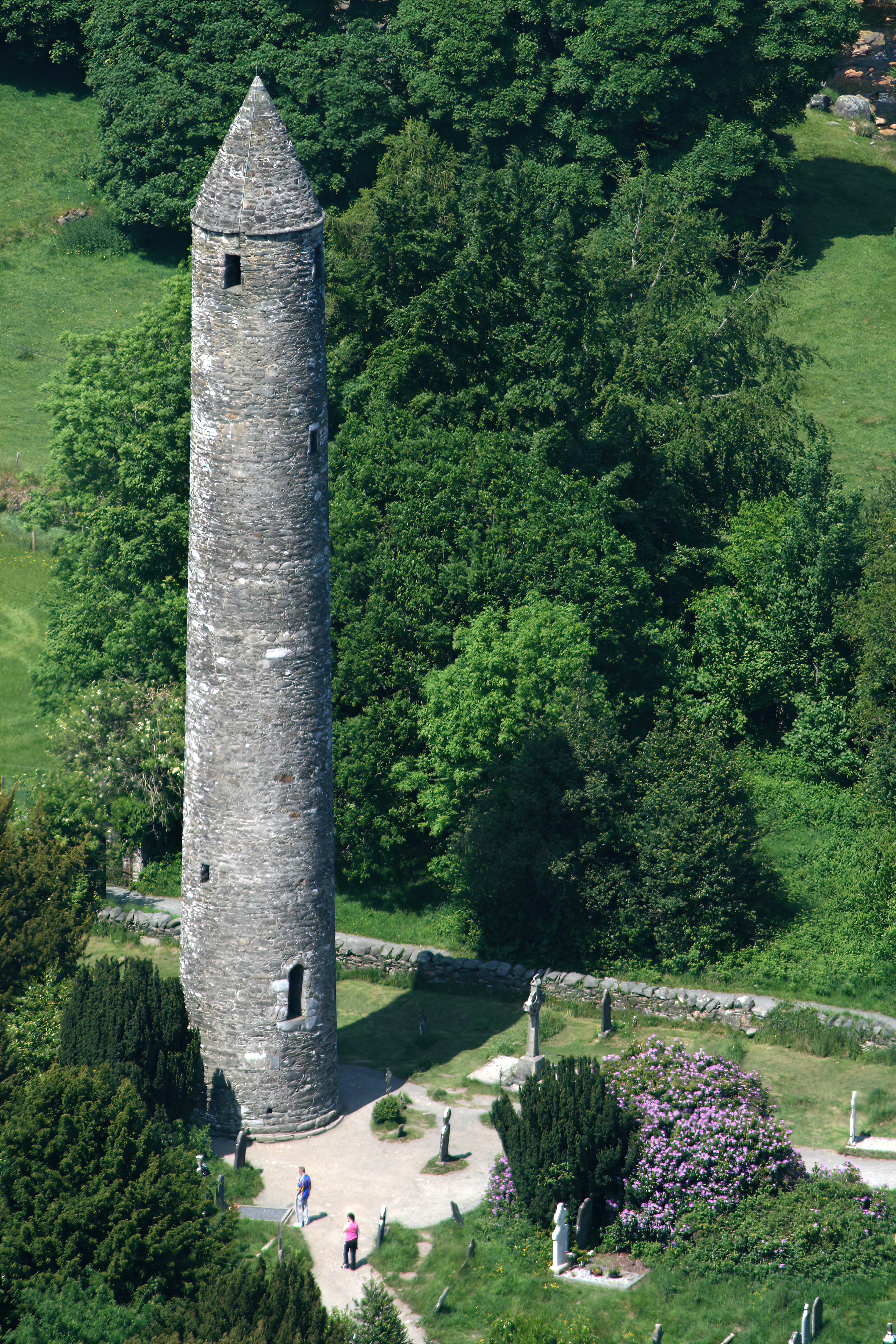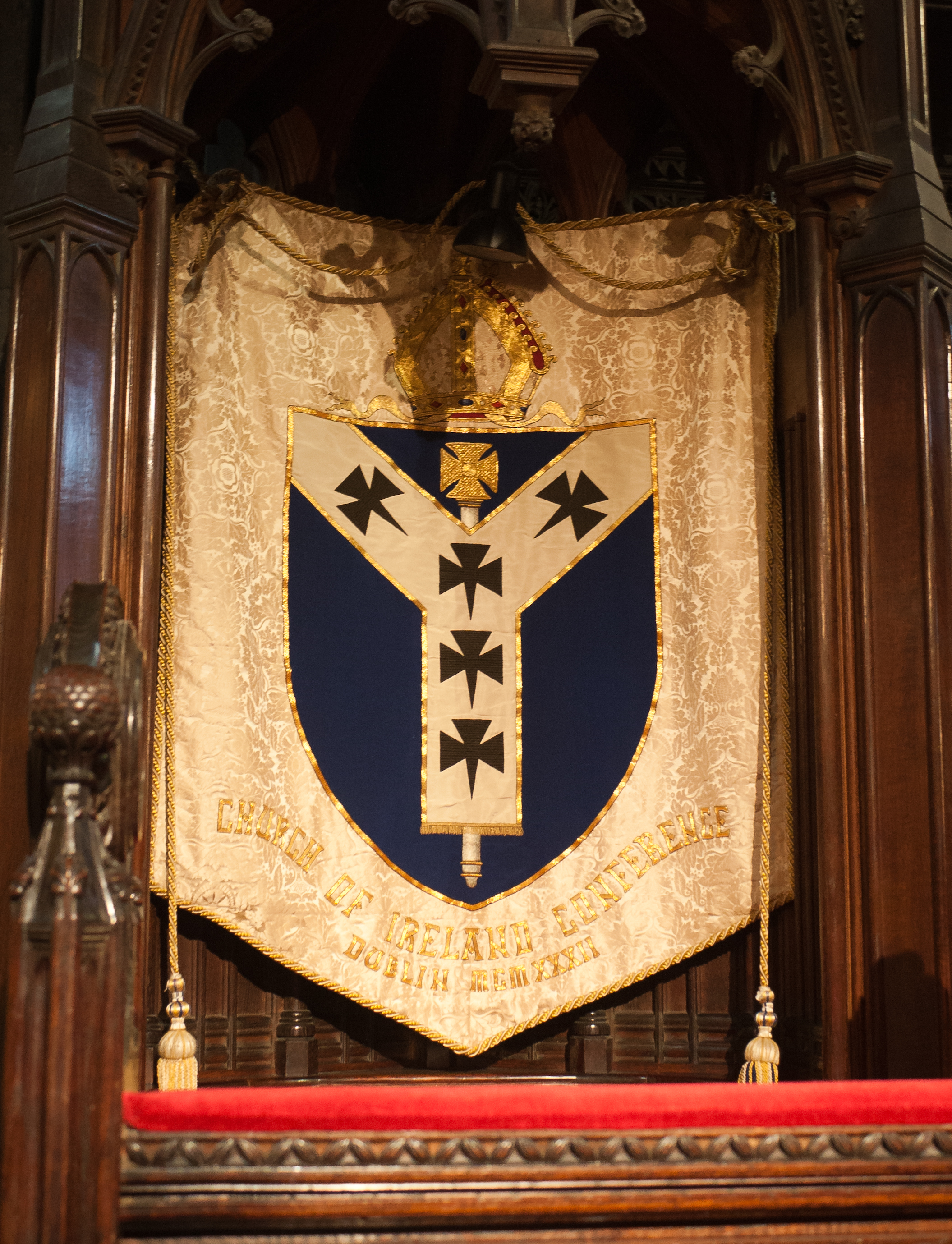|
Taghadoe
Taghadoe in County Kildare in Ireland is the site of an ancient monastic settlement and Irish round tower, round tower. The site includes a graveyard and the ruins of a 19th-century church. It is situated 5 km from Maynooth, off the Straffan Road. The name is derived from ''Teach Tua'' or 'House of Tua' in Irish, Saint Tua (Ultan the Silent) the abbot of Clonmacnoise, was responsible for founding the monastic settlement here. The site dates back to the 6th century. The round tower was used for about 1000 years, but was left in ruins by the 17th century. Most of the burials in the graveyard were in the 17th and 18th century and it was used by Roman Catholics. A John Dillon of Carton had bequeathed £1,000 for the building of a church on the site; the Duke of Leinster was the executor of his will. The church which was constructed on the site in 1831 for the Church of Ireland by a donation from the Board of First Fruits of £830. [...More Info...] [...Related Items...] OR: [Wikipedia] [Google] [Baidu] |
Irish Round Tower
Irish round towers ( ga, Cloigtheach (singular), (plural); literally 'bell house') are early mediaeval stone towers of a type found mainly in Ireland, with two in Scotland and one on the Isle of Man. As their name indicates, they were originally bell towers, though they may have been later used for additional purposes. A tower of this kind is generally found in the vicinity of a church or monastery, with the door of the tower facing the west doorway of the church. Knowledge of this fact has made it possible, where towers still exist, to determine without excavation the approximate sites of lost churches that once stood nearby. Construction and distribution Surviving towers range in height from to , and to in circumference; that at Kilmacduagh being the highest surviving in Ireland (and leaning out of perpendicular). The masonry differs according to date, the earliest examples being uncut rubble, while the later ones are of neatly joined stonework (ashlar). The lower port ... [...More Info...] [...Related Items...] OR: [Wikipedia] [Google] [Baidu] |
Board Of First Fruits
The Board of First Fruits () was an institution of the Church of Ireland that was established in 1711 by Anne, Queen of Great Britain to build and improve churches and glebe houses in Ireland. This was funded from taxes collected on clerical incomes which were in turn funded by tithes. The board was replaced in 1833 by the Board of Ecclesiastical Commissioners. History From the English Reformation in the 16th century, most Irish people chose to remain Roman Catholic and had by now to pay tithes valued at about 10% of an area's agricultural produce, to maintain and fund the established state church, the Anglican Church of Ireland, to which only a small minority of the population converted. Protests against this situation led to the Tithe war in the early 19th century. In 1711, Queen Anne agreed that the tax on clerical incomes be given to the Church of Ireland for the building of new churches and Glebe Houses. To that effect, with Jonathan Swift's influence, the Board of First ... [...More Info...] [...Related Items...] OR: [Wikipedia] [Google] [Baidu] |
Maynooth
Maynooth (; ga, Maigh Nuad) is a university town in north County Kildare, Ireland. It is home to Maynooth University (part of the National University of Ireland and also known as the National University of Ireland, Maynooth) and St Patrick's College, a Pontifical University and Ireland's sole Roman Catholic seminary. Maynooth is also the seat of the Irish Catholic Bishops' Conference and holds the headquarters of Ireland's largest development charity, Trócaire. Maynooth is located 24 kilometres (15 miles) west of central Dublin. Location and access Maynooth is located on the R148 road between Leixlip and Kilcock, with the M4 motorway bypassing the town. Other roads connect the town to Celbridge, Clane, and Dunboyne. Maynooth is also on the Dublin-Sligo railway line and is served by the Commuter and InterCity train services. Etymology Maynooth comes or ''Maigh Nuadhad'', meaning "plain of Nuadha". ''Maigh Nuad'' is the modern spelling. Nuadha was one of the gods of th ... [...More Info...] [...Related Items...] OR: [Wikipedia] [Google] [Baidu] |
Clonmacnoise
Clonmacnoise (Irish: ''Cluain Mhic Nóis'') is a ruined monastery situated in County Offaly in Ireland on the River Shannon south of Athlone, founded in 544 by Saint Ciarán, a young man from Rathcroghan, County Roscommon. Until the 9th century it had close associations with the kings of Connacht. Saint Ciarán founded the monastery in the ancient territory of Uí Maine at a point where the major east–west land route ( Slighe Mhor) meets the River Shannon after crossing the bogs of Central Ireland known as the Esker Riada. The strategic location of the monastery helped it become a major center of religion, learning, craftsmanship and trade by the 9th century;Moss (2014), p. 126 and together with Clonard it was one of the most famous places in Ireland, visited by scholars from all over Europe. From the ninth until the eleventh century it was allied with the kings of Meath. Many of the high kings of Tara ( ''ardrí'') and of Connacht were buried here. Clonmacnoise was l ... [...More Info...] [...Related Items...] OR: [Wikipedia] [Google] [Baidu] |
Ultan The Silent
Ultan ( ir, Ultán) is an Irish male given name derived from Ulster. People with the given name *Saint Ultan, Irish monk and saint *Ultan of Ardbraccan, Irish abbot and saint * Ultan Cooke, Irish chef * Ultan Conlon, Irish singer-songwriter *Ultan Dillane, Irish professional rugby player * Ultan Quigley, a fictional character People with the surname * Lloyd Ultan (composer) *Lloyd Ultan (historian) Lloyd Ultan (born 1938) is a historian and author. A native of The Bronx in New York City, he has been the borough's historian since 1996. He is a professor of history at Fairleigh Dickinson University's Petrocelli College of Continuing Studies ... See also * Owltan, a village in Ardabil Province, Iran {{given name, type=both English masculine given names English-language surnames ... [...More Info...] [...Related Items...] OR: [Wikipedia] [Google] [Baidu] |
Diocese Of Dublin And Glendalough
The United Dioceses of Dublin and Glendalough is a diocese of the Church of Ireland in the east of Ireland. It is headed by the Archbishop of Dublin, who is also styled the Primate of Ireland. The diocesan cathedral is Christ Church Cathedral, Dublin. Overview and history Early Christianity in Ireland The broad Dublin area was Christian long before Dublin had a distinct diocese, with monasteries such as Glendalough as well as at Finglas, Glasnevin, Rathmichael, Swords, Tallaght. Several of these functioned as "head churches" and the most powerful of all was Glendalough. In the early church in Ireland, the church had a monastic basis, with greatest power vested in the Abbots of the major communities. There were bishops but not organised dioceses in the modern sense, and the offices of abbot and bishop were often comprised in one person. Some early "Bishops of Dublin", back to 633, are mentioned in Ware's ''Antiquities of Ireland'' but the Diocese of Dublin is not considered ... [...More Info...] [...Related Items...] OR: [Wikipedia] [Google] [Baidu] |
Celtic Christianity
Celtic Christianity ( kw, Kristoneth; cy, Cristnogaeth; gd, Crìosdaidheachd; gv, Credjue Creestee/Creestiaght; ga, Críostaíocht/Críostúlacht; br, Kristeniezh; gl, Cristianismo celta) is a form of Christianity that was common, or held to be common, across the Celtic-speaking world during the Early Middle Ages. Some writers have described a distinct Celtic Church uniting the Celtic peoples and distinguishing them from adherents of the Roman Church, while others classify Celtic Christianity as a set of distinctive practices occurring in those areas. Varying scholars reject the former notion, but note that there were certain traditions and practices present in both the Irish and British churches that were not seen in the wider Christian world. Such practices include: a distinctive system for determining the dating of Easter, a style of monastic tonsure, a unique system of penance, and the popularity of going into "exile for Christ". Additionally, there were other pract ... [...More Info...] [...Related Items...] OR: [Wikipedia] [Google] [Baidu] |
County Kildare
County Kildare ( ga, Contae Chill Dara) is a county in Ireland. It is in the province of Leinster and is part of the Eastern and Midland Region. It is named after the town of Kildare. Kildare County Council is the local authority for the county, which has a population of 246,977. Geography and subdivisions Kildare is the 24th-largest of Ireland's 32 counties in area and the seventh largest in terms of population. It is the eighth largest of Leinster's twelve counties in size, and the second largest in terms of population. It is bordered by the counties of Carlow, Laois, Meath, Offaly, South Dublin and Wicklow. As an inland county, Kildare is generally a lowland region. The county's highest points are the foothills of the Wicklow Mountains bordering to the east. The highest point in Kildare is Cupidstown Hill on the border with South Dublin, with the better known Hill of Allen in central Kildare. Towns and villages * Allen * Allenwood * Ardclough * Athy * Ballitore * Ball ... [...More Info...] [...Related Items...] OR: [Wikipedia] [Google] [Baidu] |
Republic Of Ireland
Ireland ( ga, Éire ), also known as the Republic of Ireland (), is a country in north-western Europe consisting of 26 of the 32 counties of the island of Ireland. The capital and largest city is Dublin, on the eastern side of the island. Around 2.1 million of the country's population of 5.13 million people resides in the Greater Dublin Area. The sovereign state shares its only land border with Northern Ireland, which is part of the United Kingdom. It is otherwise surrounded by the Atlantic Ocean, with the Celtic Sea to the south, St George's Channel to the south-east, and the Irish Sea to the east. It is a unitary, parliamentary republic. The legislature, the , consists of a lower house, ; an upper house, ; and an elected President () who serves as the largely ceremonial head of state, but with some important powers and duties. The head of government is the (Prime Minister, literally 'Chief', a title not used in English), who is elected by the Dáil and appointed by ... [...More Info...] [...Related Items...] OR: [Wikipedia] [Google] [Baidu] |
Church Of Ireland
The Church of Ireland ( ga, Eaglais na hÉireann, ; sco, label= Ulster-Scots, Kirk o Airlann, ) is a Christian church in Ireland and an autonomous province of the Anglican Communion. It is organised on an all-Ireland basis and is the second largest Christian church on the island after the Roman Catholic Church. Like other Anglican churches, it has retained elements of pre-Reformation practice, notably its episcopal polity, while rejecting the primacy of the Pope. In theological and liturgical matters, it incorporates many principles of the Reformation, particularly those of the English Reformation, but self-identifies as being both Reformed and Catholic, in that it sees itself as the inheritor of a continuous tradition going back to the founding of Christianity in Ireland. As with other members of the global Anglican communion, individual parishes accommodate different approaches to the level of ritual and formality, variously referred to as High and Low Church. Overvie ... [...More Info...] [...Related Items...] OR: [Wikipedia] [Google] [Baidu] |






